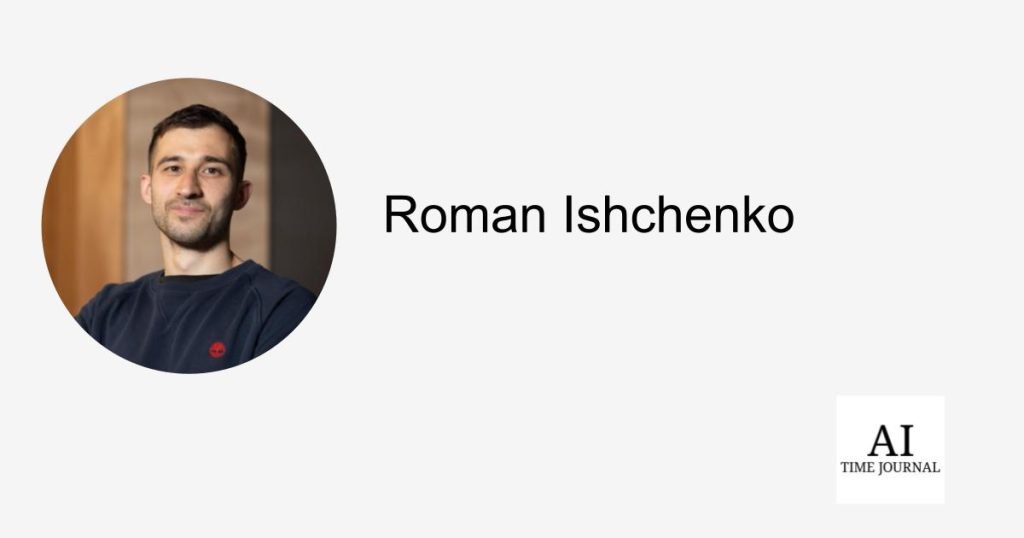Roman Ishchenko: “We teach AI to help people hire people, not replace them” – AI Time Journal

The AI researcher and founder of a next-generation recruiting platform explains why the recruiting market is “broken,” how AI has changed the way companies search for talent, and what needs to be done to bring the human factor back into the hiring process.
Recruitment today is one of the fastest changing areas of business. Companies are struggling to find qualified professionals, while candidates are using AI tools to create resumes and cover letters, flooding recruiters with hundreds of nearly identical applications. To handle this volume, HR departments turn to AI filters, but these algorithms often produce bias and cannot adapt to the real needs of the company. As a result, internal hiring is declining: it still works in team or entry-level roles, but rarely fills qualified positions.
Roman Ishchenko, PhD, a mathematician with applications in computer science, founder and CEO of Raised.ai, and author of papers on AI-driven systems, has spent the past several years building technologies that make hiring faster, more accurate, and focused on real people.
In this article, based on that interview with Roman Ishchenko, we explore how the platform was created, why it came to be, and how his team is shaping the future of recruitment by building and training a workforce. Human-centered artificial intelligence A system designed to make technology serve people.
Why is the employment market broken today?
What was once a human-to-human process is quickly turning into a dialogue between algorithms. Candidates use AI to write and rehearse their answers, while recruiters rely on AI systems to evaluate them. On the other hand, recruiters and companies are also deploying AI agents to scan resumes, conduct interviews, and make hiring recommendations.
“This shift, in my opinion, will ultimately make internal staffing obsolete – it is already on its last legs.” says Roman Ishchenko.
According to the expert, the symmetrical use of artificial intelligence on both sides makes the process less transparent. When algorithms select candidates and candidates respond with the help of an algorithm, the essence of human connection is lost. Interviews do not become a dialogue between people, but rather an interaction between two systems trained to recognize and adapt to patterns.
“One of the big problems” He adds: “It is that recruiters are letting the AI manage them instead of the AI managing them. Many recruiters let AI do the thinking for them – for example, asking ChatGPT which interview questions to use or which evaluation criteria to apply. It should be the other way around: recruiters set the direction, and AI implements and supports.
How can recruitment be made more human-centric using AI?
Most candidates today take interviews based on artificial intelligence, but they still prefer to meet a real person. When a candidate has two or three offers, they will often choose the company that has invested more effort in building a relationship with them. It’s also the recruiter who knows what the candidate is offering and what concerns they might have, because they’ve built that relationship. For now, humans still prefer relationships with humans, not AI.
That’s why Roman Ishchenko decided to take a different approach to using artificial intelligence. The idea behind his company is not to replace recruiters, but to empower them, that is, make them more productive and focused on meaningful interaction rather than dealing with repetitive tasks.“We believe that about 50% of the work can be automated.” Roman Ishchenko notes. “Our pool of engaged candidates allows us to close positions faster than traditional agencies and with people who wouldn’t typically respond to a LinkedIn message.”
Nearly half of placements come from our internal database, which continues to grow. The company’s AI handles sourcing across internal and external platforms and manages initial communications to candidates.
Digital assistant searchlight Acts as a recruiter’s co-pilot: finding and mapping candidates, conducting first conversations, and organizing the pipeline with meeting summaries, follow-ups, and application forms. Recruiters then step in to conduct interviews and final selection, ensuring each candidate is evaluated with human judgment and empathy.
How was he trained?
Raised.ai is constantly improving its system through feedback from its internal team of senior recruiters and from client companies that use the platform. According to Roman Ishchenko, the main factor in achieving quality results is proprietary data.
“Most tools are based on LinkedIn, but that is a big limitation.” He explains. “Many candidates don’t have complete or up-to-date profiles – an engineer might just write ‘software engineer’ without mentioning their tech stack or current project. Furthermore, LinkedIn actively restricts access to its data. So having our own data set is critical – both in the short and long term.”
To solve this problem and continuously improve the algorithms, Roman’s team collects unique data of candidates and uses it to train specialized models. Each job description is broken down into separate criteria: skills, field, industry, location, language, and leadership level, and individual models are trained for each.
The system acts as a retrieval augmented generation (RAG) pipeline: for example, to evaluate a candidate’s expertise in Python, a custom model retrieves information from the internal knowledge base on how to evaluate these skills and generates the corresponding score. Different large language models are used for different parts of the process.
The future of recruiting
Today, candidates in Raised.ai’s database respond about 90% of the time, compared to about 20% in a typical cold outreach on LinkedIn. This allows the company to deliver first candidates to customers as soon as the next day.
Automation has dramatically increased the productivity of recruiters. Since about half of a recruiter’s time is typically spent on sourcing and chatting, automating these stages enables each specialist to handle twice as many candidates without losing quality.
At the same time, accuracy has improved. Through AI-assisted assessment, recruiters make fewer errors, and every candidate presented is truly a good fit. From a Business perspectiveAutomating and standardizing much of the process makes the model scalable, with margins close to those of SaaS companies. This is one of the reasons why this approach has attracted strong interest from investors.
Roman Ishchenko’s vision has been validated by several major accelerators, including 500 Global and UltraVC, which supported the development of Raised.ai and helped the company secure funding. Many entrepreneurs in these programs face the same recruiting challenges and clearly see the need for new AI-driven solutions.
“Accelerators bring many benefits – investments, networking, mentorship, and international exposure.” says Roman Ishchenko. “But for me, the most valuable part is the community. I joined programs not just for funding but to stay close to other founders, mentors, and industry experts to share hiring trends and build stronger expert networks. This is how we grow as an ecosystem, and I believe this is the right way forward.”“












